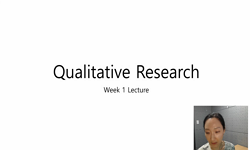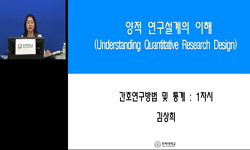This narrative review aims to highlight key insights from qualitative research on drug use and drug users by profiling a selection of classic works. Consensus methods were used to identify and select four papers published in 1938, 1969, 1973 and 1984 ...
http://chineseinput.net/에서 pinyin(병음)방식으로 중국어를 변환할 수 있습니다.
변환된 중국어를 복사하여 사용하시면 됩니다.
- 中文 을 입력하시려면 zhongwen을 입력하시고 space를누르시면됩니다.
- 北京 을 입력하시려면 beijing을 입력하시고 space를 누르시면 됩니다.
https://www.riss.kr/link?id=O113277409
- 저자
- 발행기관
- 학술지명
- 권호사항
-
발행연도
2018년
-
작성언어
-
-
Print ISSN
0965-2140
-
Online ISSN
1360-0443
-
등재정보
SCI;SSCI;SCIE;SCOPUS
-
자료형태
학술저널
-
수록면
167-172 [※수록면이 p5 이하이면, Review, Columns, Editor's Note, Abstract 등일 경우가 있습니다.]
- 소장기관
-
구독기관
- 전북대학교 중앙도서관
- 성균관대학교 중앙학술정보관
- 부산대학교 중앙도서관
- 전남대학교 중앙도서관
- 제주대학교 중앙도서관
- 중앙대학교 서울캠퍼스 중앙도서관
- 인천대학교 학산도서관
- 숙명여자대학교 중앙도서관
- 서강대학교 로욜라중앙도서관
- 계명대학교 동산도서관
- 충남대학교 중앙도서관
- 한양대학교 백남학술정보관
- 이화여자대학교 중앙도서관
- 고려대학교 도서관
-
0
상세조회 -
0
다운로드
부가정보
다국어 초록 (Multilingual Abstract)
Consensus methods were used to identify and select four papers published in 1938, 1969, 1973 and 1984 considered to be classics.
These landmark qualitative studies included the first account of addiction as a social process, demonstrating that people have meaningful responses to drug use that cannot be reduced to their pharmacological effects; the portrayal of inner‐city heroin users as exacting, energetic and engaged social agents; identification of the interactive social learning processes involved in becoming a drug user; the application of the ‘career’ concept to understanding transitions and trajectories of drug use over time; and the articulation of a framework for understanding drug use that incorporates the interaction between pharmacology, psychology and social environments.
These classic sociological and anthropological studies deployed qualitative research methods to show how drug use is shaped by complex sets of factors situated within social contexts, viewing drug users as agents engaged actively in social processes and worlds. Their findings have been used to challenge stereotypes about drug use and drug users, develop a deeper understanding of drug use among hidden, hard‐to‐research and under‐studied populations, and provide the foundations for significant developments in scientific knowledge about the nature of drug use. They continue to retain their relevance, providing important correctives to biomedical and behaviourist paradigms, reminding us that drug use is a social process, and demonstrating how the inductive approach of qualitative research can strengthen the way we understand and respond to drug use and related harms.
This narrative review aims to highlight key insights from qualitative research on drug use and drug users by profiling a selection of classic works.
Consensus methods were used to identify and select four papers published in 1938, 1969, 1973 and 1984 considered to be classics.
These landmark qualitative studies included the first account of addiction as a social process, demonstrating that people have meaningful responses to drug use that cannot be reduced to their pharmacological effects; the portrayal of inner‐city heroin users as exacting, energetic and engaged social agents; identification of the interactive social learning processes involved in becoming a drug user; the application of the ‘career’ concept to understanding transitions and trajectories of drug use over time; and the articulation of a framework for understanding drug use that incorporates the interaction between pharmacology, psychology and social environments.
These classic sociological and anthropological studies deployed qualitative research methods to show how drug use is shaped by complex sets of factors situated within social contexts, viewing drug users as agents engaged actively in social processes and worlds. Their findings have been used to challenge stereotypes about drug use and drug users, develop a deeper understanding of drug use among hidden, hard‐to‐research and under‐studied populations, and provide the foundations for significant developments in scientific knowledge about the nature of drug use. They continue to retain their relevance, providing important correctives to biomedical and behaviourist paradigms, reminding us that drug use is a social process, and demonstrating how the inductive approach of qualitative research can strengthen the way we understand and respond to drug use and related harms.
동일학술지(권/호) 다른 논문
-
- John Wiley & Sons Ltd
- unknown
- 2018
- SCI;SSCI;SCIE;SCOPUS
-
Addiction Lives: Thomas F. Babor
- John Wiley & Sons Ltd
- unknown
- 2018
- SCI;SSCI;SCIE;SCOPUS
-
- John Wiley & Sons Ltd
- unknown
- 2018
- SCI;SSCI;SCIE;SCOPUS
-
- John Wiley & Sons Ltd
- unknown
- 2018
- SCI;SSCI;SCIE;SCOPUS












